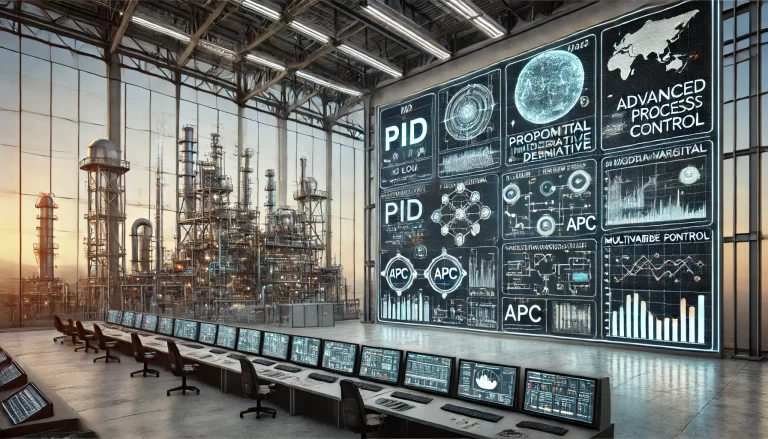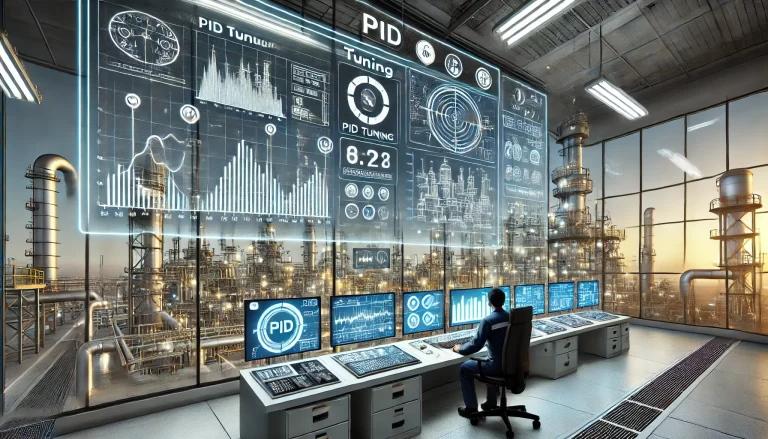In the pursuit of higher levels of automation, many industrial plants are investing heavily in new equipment and instrumentation. These investments are often necessary, and they do bring measurable improvements. However, installing hardware is only the starting point. The true objective of automation is not simply to add more devices—it is to enhance plant safety, reduce manual interventions, and improve economic performance.
A genuinely intelligent plant should aim to operate at the highest performance level among its peers. Reducing the need for operator intervention and reinforcing the foundation of basic control are the most critical steps toward meaningful automation. Without clear objectives or the right approach, automation investments can quickly become wasteful. We must ensure that we are putting our money where it truly matters—into knowledge automation.

Is PID Really the Problem?
There’s a saying I often use:
“There’s no process control problem that one PID can’t solve. If there is, then maybe two can.”
This is, of course, a bit tongue-in-cheek, but it reflects a deeper truth: PID (Proportional-Integral-Derivative) control remains the most widely applied control algorithm in the industrial world—not because it’s perfect, but because it is robust, adaptable, and efficient when used correctly.
However, in practice, we often see situations where PID control appears ineffective. This is not due to the limitations of the PID algorithm itself, but rather due to poor implementation, inadequate understanding of the process, or flawed control logic.
Some common issues include:
Default PID Parameters: It’s shocking how many live control loops are running on factory-default PID settings. This shows both misplaced confidence and a lack of attention. Poorly tuned parameters can cause oscillations and system instability, leading to the belief that “manual control is more stable than automatic.”
Overly Conservative Tuning: In an attempt to avoid instability, some engineers choose extremely conservative PID settings. The result? Poor disturbance rejection, slow response times, and reduced autonomy. When combined with unrealistic expectations for automatic control rates and “black screen” (zero manual intervention) operation, this creates unnecessary operational risks.
Over-Simplified Loop Design: In multi-variable, multi-objective systems, breaking the problem into a few standalone single loops without understanding the full picture can lead to under-utilized control actions and frequent exceptions. For instance, in level control, if both inlet and outlet flows can be adjusted, choosing only one without dynamic logic leads to inefficiency.

The Reality Gap: Why Automation Still Fails
Despite years of investment, many plants still struggle to achieve true automatic control. Some examples of why include:
Control Scheme Mismatch: The original design of the control strategy may no longer suit current production conditions. Feedback control is meant to reduce process variability—but a poorly designed control scheme can add uncertainty instead. If no one is able or willing to redesign the strategy, manual operation becomes the fallback.
Lack of Engineering Capability: Many plants lack the in-house expertise to fully leverage PID. Misunderstanding or underestimating the capabilities of PID leads to a cascade of issues. As a result, we end up with:
“A group of people who don’t understand PID pushing for APC;
a group that doesn’t understand APC promoting AI adaptive control;
and some who don’t understand the plant itself trying to sell RTO optimization…”
These scenarios are not exaggerations—they reflect a growing gap between process understanding and control strategy design.

Automation Without Closure is Just Expense
Yes, automation requires investment. But spending money is only the beginning. If the system isn’t closed-loop—if the results aren’t measured, improved, and sustained—then the investment is essentially wasted.
If building a smart factory were just a matter of spending money, then full modernization would have been achieved long ago. True automation is about unlocking the potential of your process and equipment through operational knowledge. It is about transforming operator actions into standardized, automated responses.
A Path Forward: From Intervention to Excellence
Each operator action is a signal—an indication that the process still has room for improvement. By analyzing these interventions and applying the right process control tools, we can work toward a system with zero manual touches.
The goal is not complexity for complexity’s sake. In fact:
“Complex doesn’t mean correct. Simple doesn’t mean wrong. The key is to simplify based on deep understanding.”
Through simplification, decomposition, and precise engineering, complex process control challenges can often be reduced to strong single-loop control problems—exactly where PID excels.

Conclusion: Make Simplicity the Target, Not the Compromise
Automation is not about removing humans—it’s about augmenting human expertise with systems that can act with intelligence and precision. Equipment and instruments are essential, yes, but without the right knowledge, they are just hardware.
By committing to knowledge automation, carefully tuning control loops, and continuously improving control schemes, we move toward safer, smarter, and more efficient operations. Let’s make “zero manual operation” a real, measurable goal—one that elevates our plants from automated to truly intelligent.
